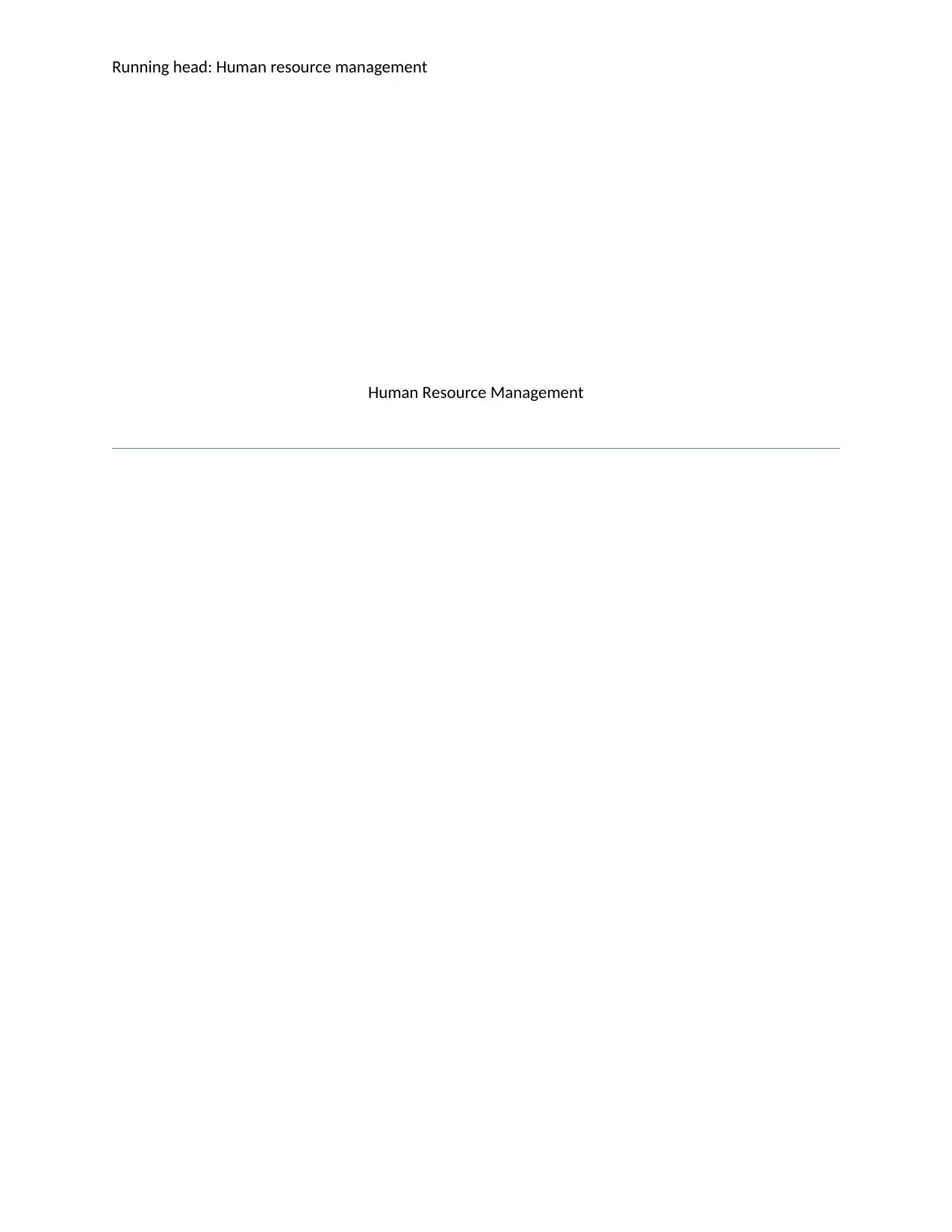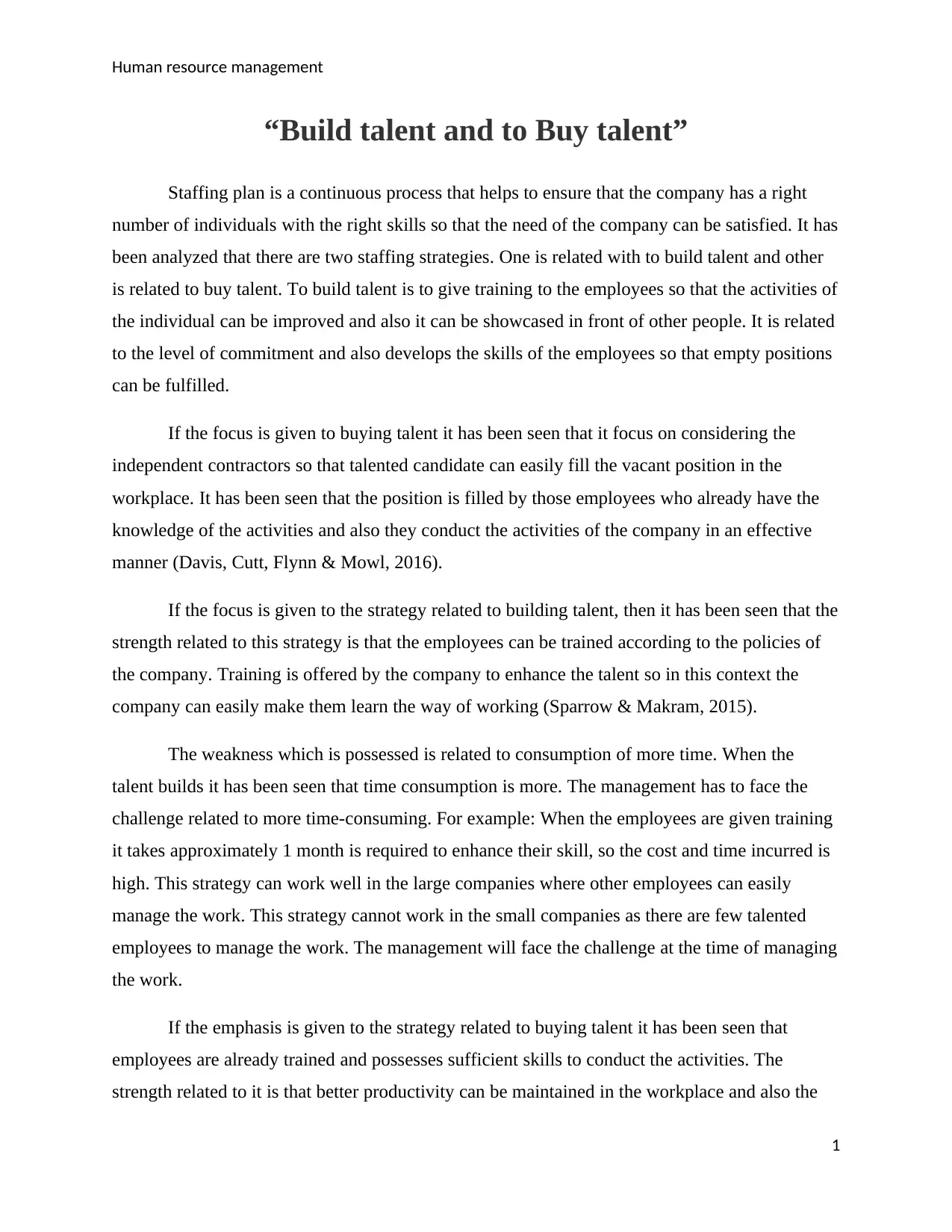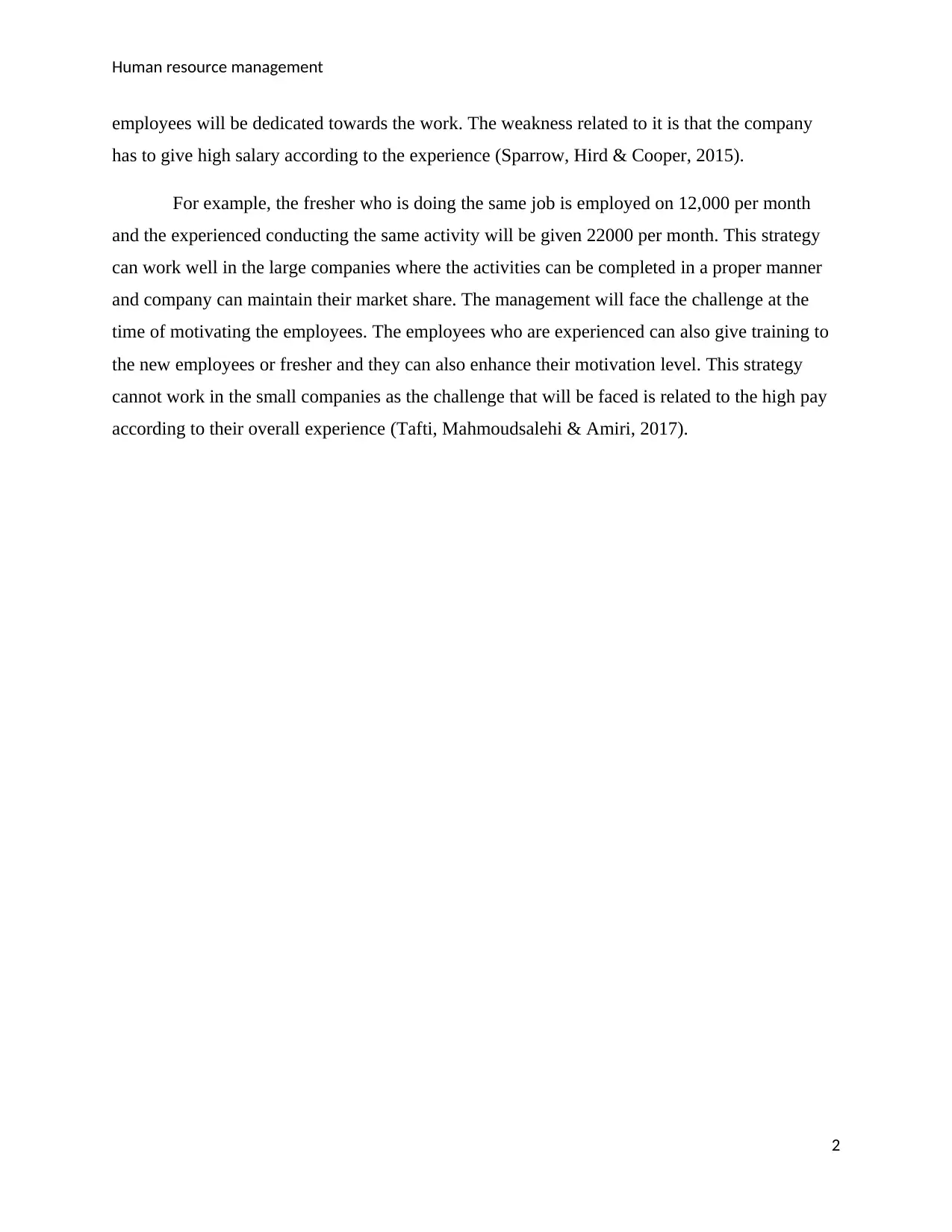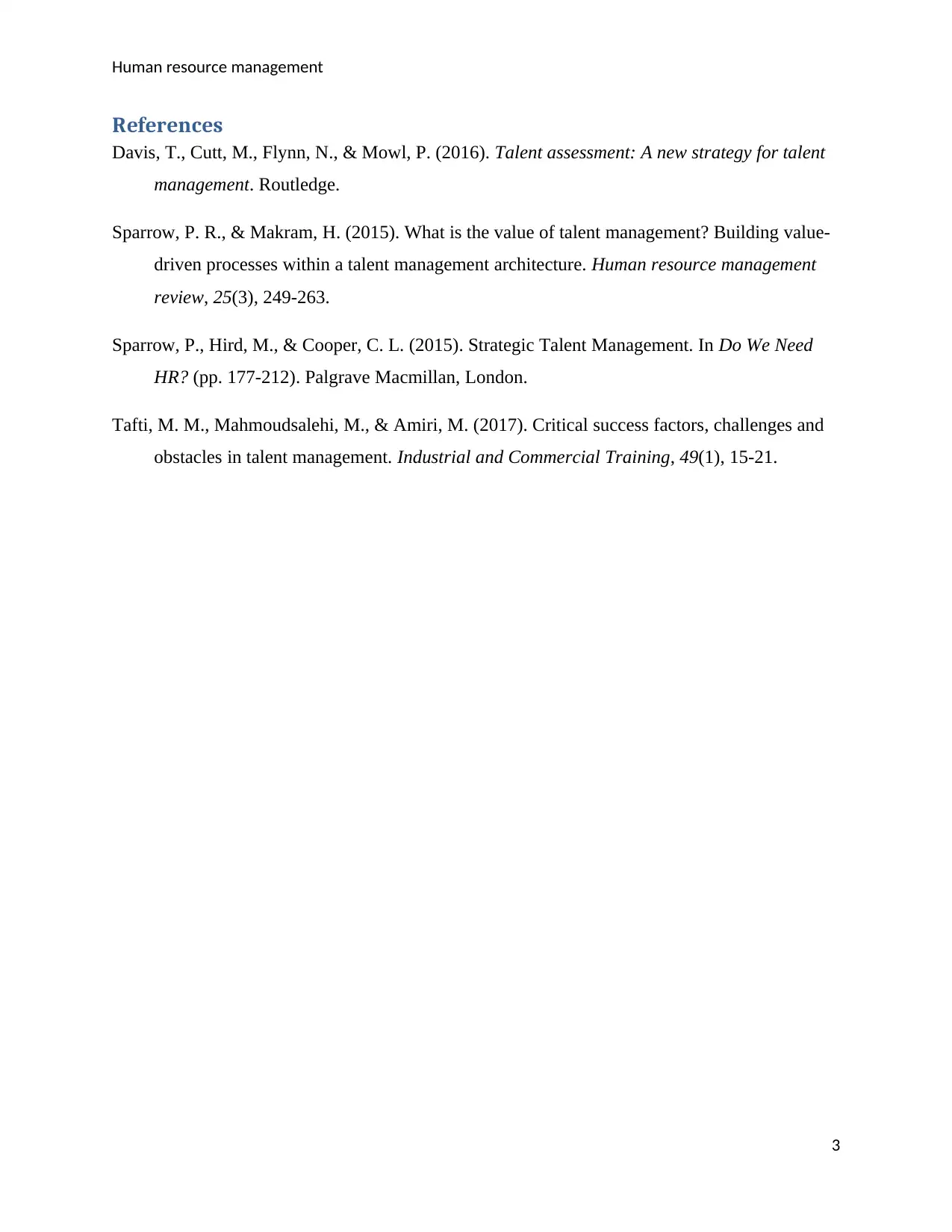Human Resource: Strategic Staffing Plans - Build or Buy Talent?
VerifiedAdded on 2023/06/11
|4
|788
|266
Essay
AI Summary
This essay analyzes two primary staffing strategies in human resource management: building talent through training and development, and buying talent by hiring experienced professionals or independent contractors. The 'build talent' strategy allows companies to train employees according to their specific policies, enhancing skills and promoting internal growth, but it can be time-consuming and costly. Conversely, the 'buy talent' strategy provides immediate access to skilled employees, boosting productivity, but may require higher salaries. The essay discusses the strengths and weaknesses of each approach, suggesting that 'building talent' is better suited for large companies while 'buying talent' can present financial challenges for smaller firms. The essay concludes by noting the importance of motivation and potential training opportunities when buying experienced talent.
1 out of 4











![[object Object]](/_next/static/media/star-bottom.7253800d.svg)